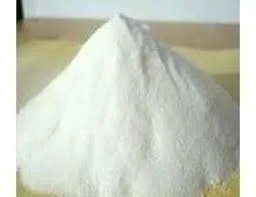
Oktoba . 15, 2024 21:36 Back to list
hpmc solution preparation
HPMC Solution Preparation A Comprehensive Guide
Hydroxypropyl methylcellulose (HPMC) is a commonly used polymer in various industries, renowned for its thickening, binding, and film-forming properties. The preparation of HPMC solutions is a critical process in applications ranging from pharmaceuticals to food science and construction. Understanding the correct methodology for preparing HPMC solutions is essential for achieving the desired viscosity and performance characteristics.
Selecting the Right HPMC Grade
Before beginning the preparation process, it is crucial to select the appropriate grade of HPMC for your specific application. HPMC comes in different viscosities, solubilities, and particle sizes. Low-viscosity grades are suitable for applications requiring quick-dissolving properties, while high-viscosity grades provide superior thickening capabilities. Always refer to the manufacturer's specifications to choose the suitable grade for your needs.
Preparing the Solution
1. Determine the Concentration The concentration of HPMC in the solution will depend on the intended application. Typically, concentrations range from 0.5% to 5% w/v. Higher concentrations yield thicker solutions and may require additional care during preparation to ensure complete dissolution.
2. Choosing the Solvent HPMC is soluble in cold water, making it an ideal choice for aqueous solutions. Ensure that the water used is clean and free of impurities to prevent any contamination of the solution.
hpmc solution preparation

3. Dissolving HPMC To prepare the solution, begin by measuring the appropriate amount of HPMC. Gradually sprinkle the HPMC powder into the stirring water while maintaining continuous agitation. Avoid adding HPMC too quickly, as this can lead to clumping and incomplete dissolution.
4. Temperature Control For optimal dissolution, it's recommended to start with cold or room temperature water. If a quicker dissolution is necessary, you can slightly increase the water temperature, but ensure it does not exceed 50°C to avoid degrading the polymer.
5. Homogenization Continue stirring until the solution is uniform without any lumps. This may take several hours, depending on the concentration and specific grade of HPMC used. A mechanical stirrer can enhance the mixing efficiency.
6. Adjusting Viscosity After achieving a homogenous mixture, allow the solution to sit for a specified time to ensure complete hydration. If adjustments to viscosity are required, further dilution with water or the addition of more HPMC can be performed.
Conclusion
Proper preparation of HPMC solutions is pivotal for achieving desired outcomes in various applications. By following these steps and considering critical factors such as concentration, solvent choice, and temperature, one can ensure the successful formulation of HPMC solutions with the required properties for their respective uses.
-
The Widespread Application of Redispersible Powder in Construction and Building Materials
NewsMay.16,2025
-
The Widespread Application of Hpmc in the Detergent Industry
NewsMay.16,2025
-
The Main Applications of Hydroxyethyl Cellulose in Paints and Coatings
NewsMay.16,2025
-
Mortar Bonding Agent: the Key to Enhancing the Adhesion Between New and Old Mortar Layers and Between Mortar and Different Substrates
NewsMay.16,2025
-
HPMC: Application as a thickener and excipient
NewsMay.16,2025
-
Hec Cellulose Cellulose: Multi functional dispersants and high-efficiency thickeners
NewsMay.16,2025







